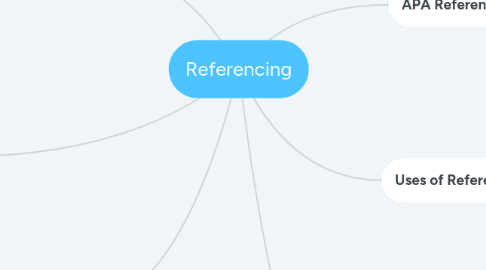Referencing
Madeeha Ghaniにより


1. What is referencing?
1.1. The art of letting readers know where you found your information.
2. When to Use a Reference
2.1. When quoting someone.
2.2. When using tables or diagrams from another work.
2.3. When using a picture from the internet.
2.4. When paraphrasing or summarizing.
3. How to Reference
3.1. Author. (Year). Title (Edition). Place: Publisher.
4. APA Referencing
4.1. Brief/in-text reference:
4.1.1. Format: Information prominent citation Example: (author, year, page no.) If you’ve paraphrased, then don’t include quotation marks in your sentence, and the page no. isn’t essential.
4.1.2. Format: Author prominent citation The author becomes a part of the sentence. Example: Author (year, page no.)

